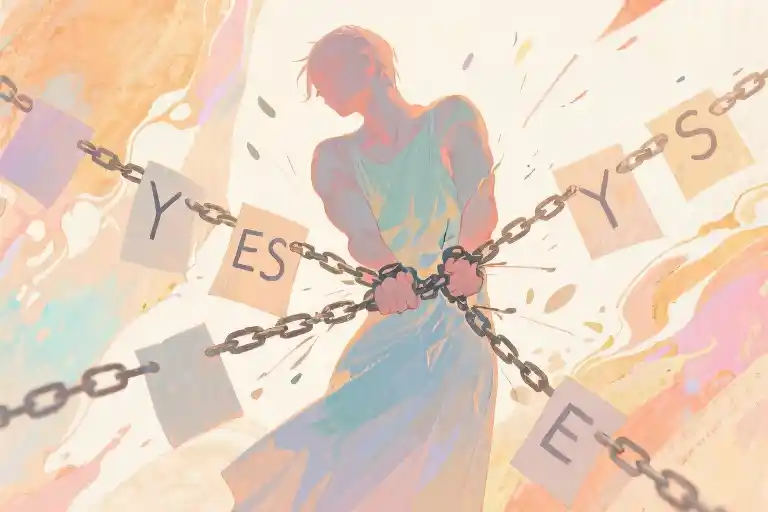Twelve years. For twelve long, harrowing years, my life oscillated between soul-crushing depression and nerve-shredding anxiety attacks. Where mornings began with uncontrollable sobbing spells and nights ended with migraines pounding like war drums. Where grocery store aisles triggered panic attacks, and prescription bottles accumulated like grim trophies of a battle I couldn’t win.
Yet today, my feet pound against pavement in rhythmic meditation during sunrise runs. My hands steady themselves through breathing techniques when old triggers surface. The same mind that once convinced me of hopelessness now recognizes distorted thoughts like familiar enemies in a lifelong negotiation. This transformation wasn’t miraculous—it emerged from two brutal realizations: that my treatment had been dangerously misguided, and that healing required me to become an active participant rather than a passive patient.
The turning point came in 2017 during my darkest hour. Fresh from a suicide attempt and drowning in a cocktail of medications, I stumbled upon a dog-eared workbook on cognitive behavioral therapy (CBT) in a waiting room. Its pages revealed what twelve years of psychiatric mismanagement hadn’t: that my brain had been both the prison and the potential key. That while medications addressed chemical imbalances, nobody had taught me how to recognize when my own thoughts were lying to me.
Here’s what those years taught me about the complex dance between proper treatment and self-awareness:
- The Medication Mirage: How seven years of escalating prescriptions (from SSRIs to benzodiazepines) created dependency without addressing root causes
- The CBT Breakthrough: The moment I realized anxiety wasn’t something to ‘cure’ but a faulty alarm system I could reprogram
- The Doctor Dilemma: Why finding a psychiatrist who valued therapy over pills became my 2020 lifeline
This isn’t just my story—it’s a roadmap for anyone trapped in the cycle of ineffective mental health treatment. Because the most dangerous lie depression tells isn’t ‘you’re worthless.’ It’s ‘nothing will ever change.’ And having lived through twelve years of darkness into light, I’m here to tell your brain what mine needed to hear: change isn’t just possible, it’s already beginning.
When Medications Became Shackles: My 7 Years of Misdiagnosis (2013-2020)
The morning light used to terrify me. Not metaphorically—my hands would physically tremble pulling back curtains, my chest tightening with the sunrise. That’s how my days began during what I now call ‘the lost years,’ when well-meaning but misguided treatment kept me trapped in a cycle of despair.
The Symptom Avalanche
My medical charts from that era read like a catalog of psychological distress:
- Emotional tsunamis: Uncontrollable sobbing spells that left me dehydrated and raw
- Body betrayal: Nerve-shredding anxiety manifesting as visible tremors during work meetings
- Cognitive collapse: Migraines so severe I’d lose words mid-sentence
- Silent screaming: Suicide ideation that played like a broken record during school pickups
What no chart captured was the shame. The crushing guilt when my daughter’s tiny hand would pat my heaving shoulders during yet another bathroom floor meltdown. The humiliation of colleagues witnessing my ‘unprofessional’ panic attacks in the copy room.
The Treatment Trap
My then-psychiatrist operated on autopilot:
- Medication roulette: Swapping SSRIs like Zoloft for SNRIs like Effexor every 6 months
- Dose escalation: Increasing milligrams when side effects emerged rather than reconsidering
- The missing piece: Never once suggesting therapy or trauma evaluation
A 2018 Journal of Clinical Psychiatry study later validated my experience—approximately 40% of depression patients receive inaccurate initial diagnoses. Like them, I became a chemical experiment rather than a whole person.
The Breaking Point
The turning point came ironically through failure—my 2017 suicide attempt. During mandatory post-attempt counseling, a battered library copy of Feeling Good by Dr. David Burns sat abandoned on the waiting room table. Flipping through its dog-eared pages, I encountered my first cognitive behavioral therapy (CBT) exercise:
“When you think ‘I’m worthless,’ ask: Would I say this to someone I love?”
That single highlighted sentence planted the seed that would eventually crack my medication-only approach wide open. Though full understanding would take years, that moment marked the beginning of my brain’s rebellion against passive victimhood.
What I Wish I’d Known Then
Looking back, these red flags signaled ineffective treatment:
- No treatment plan: Just perpetual ‘let’s try this pill next’ with no endpoint
- Symptom focus only: Never exploring root causes or childhood trauma
- One-way conversations: 15-minute med checks with zero therapy elements
If your current treatment resembles this pattern, consider it a blinking neon warning sign. As I learned the hard way, pills can’t teach coping skills—and no amount of medication fixes being profoundly misunderstood.
Cognitive Behavioral Therapy: How My Brain Learned to Heal Itself
The turning point came unexpectedly in 2017, when a dog-eared workbook left behind in my psychiatrist’s waiting room introduced me to cognitive behavioral therapy. Flipping through its pages during yet another anxiety-filled wait, one diagram stopped me cold – a simple triangle connecting ‘Thoughts,’ ‘Feelings,’ and ‘Behaviors.’ For the first time in seven years of treatment, someone was suggesting my depression might not just be a chemical imbalance, but something I could actively participate in changing.
The Thought Record That Changed Everything
My first attempt at completing a CBT thought record felt like trying to decipher hieroglyphics. The exercise asked me to:
- Identify a triggering event (my spilled coffee that morning)
- Record my automatic thought (‘I ruin everything’)
- Examine the evidence (finding counterexamples where I hadn’t ‘ruined everything’)
- Develop a balanced thought (‘Sometimes I make mistakes – like all humans’)
What seemed like elementary school homework revealed something profound: my brain had been running on autopilot, interpreting every minor setback as catastrophic failure. CBT became my mental mirror, showing me how distorted thinking patterns were fueling my depression and anxiety.
Rewiring Neural Pathways: The Coffee Spill Case Study
That spilled coffee became my personal laboratory for understanding cognitive restructuring. Here’s how CBT transformed my reaction:
Old Pattern:
- Event: Coffee spills
- Automatic Thought: ‘I’m such a clumsy idiot’
- Emotion: Shame (8/10 intensity)
- Behavior: Isolate myself, cancel meetings
New CBT Approach:
- Event: Same coffee spill
- Noticed Thought: ‘There’s that all-or-nothing label again’
- Balanced Thought: ‘I bumped the cup – that happens when you’re rushing’
- Emotion: Annoyance (3/10)
- Behavior: Clean up, make new coffee
This microcosm demonstrated how CBT for depression works – not by eliminating negative thoughts, but by creating mental space to question them. Over months, these small victories accumulated into real change. My panic attack frequency decreased from weekly to monthly, then to rare occurrences.
The Limits of Talk Therapy
As transformative as CBT was, I learned it couldn’t solve everything alone. During particularly severe depressive episodes, when getting out of bed felt impossible, no amount of cognitive restructuring could overcome my brain’s physiological state. This realization led to my second breakthrough – understanding that effective treatment often requires multiple approaches:
- CBT for managing thought patterns
- Medication (at proper doses) for biochemical support
- Lifestyle changes (sleep, nutrition, exercise)
- Social support to combat isolation
My current psychiatrist calls this the ‘mental health quartet’ – all four instruments need to play in harmony. Where my previous doctor saw medication as the entire orchestra, CBT taught me to appreciate the symphony of interventions.
Practical Tools You Can Use Today
For readers wanting to experiment with CBT techniques, these beginner-friendly exercises helped me most:
- The 5-Column Thought Record (Event → Thought → Emotion → Evidence → Balanced Thought)
- Behavioral Activation (Scheduling one rewarding activity daily)
- Decatastrophizing (‘What’s the realistic worst-case scenario?’)
Free resources like the MoodTools app or the Centre for Clinical Interventions workbooks make these techniques accessible even without a therapist. Remember – the goal isn’t to become relentlessly positive, but to develop more accurate, less emotionally-charged thinking.
What began as a desperate grab at a discarded workbook became my roadmap out of depression’s labyrinth. CBT didn’t just change my thoughts – it changed my relationship with my own mind, transforming me from passive patient to active participant in my healing journey.
The 5 Signs of a Good Psychiatrist: My 2020 Treatment Revolution
After seven years of cycling through medications that never addressed the root of my suffering, meeting my current psychiatrist felt like stepping into sunlight after a decade in a basement. The differences between my old and new treatment approaches weren’t just noticeable—they were revolutionary. Here’s what finally worked:
1. The 90-Minute Evaluation vs. The 15-Minute Checkup
My previous psychiatrist would glance at his watch before I finished describing my symptoms. “Your serotonin levels are problematic,” he’d declare within 15 minutes, already scribbling another prescription. My new doctor? She spent 90 minutes in our first session just listening—not just to my symptoms, but to my life story, childhood experiences, and even my creative writing habits. “We need to address these trauma patterns first,” she noted, highlighting connections I’d never considered.
2. Treatment Transparency
Instead of mysterious medication cocktails, my current psychiatrist created a shared Google Doc we both edit. It lists:
- Clear treatment goals (“Reduce panic attacks from daily to weekly”)
- Medication tapering schedules
- CBT homework assignments
- Emergency coping strategies
This collaborative approach helped me understand that psychiatric medication should be a temporary scaffold—not a lifelong crutch.
3. The Medication Philosophy Shift
Under my former doctor, I was taking:
- 40mg Paroxetine (Paxil)
- 2mg Clonazepam (Klonopin)
- 150mg Bupropion (Wellbutrin)
- 50mg Trazodone (for sleep)
My new psychiatrist’s first question stunned me: “Which of these do you feel actually helps?” After careful monitoring, we:
- Gradually tapered off Paxil (which worsened my anxiety)
- Replaced Klonopin with CBT techniques for panic attacks
- Kept only Wellbutrin at a lower dose
4. Integrated Therapy Approach
While my old doctor dismissed my interest in CBT (“Just take the pills”), my current psychiatrist coordinates with my therapist. They discuss:
- How medication supports my therapy progress
- When to reduce meds as coping skills improve
- Physiological vs. psychological symptoms
5. The Relapse Prevention Plan
Instead of crisis management, we built a prevention system:
- Early warning signs list (e.g., disrupted sleep patterns)
- CBT “emergency kit” (pre-written rational responses to intrusive thoughts)
- Medication adjustment protocol (temporary small dose increases during extreme stress)
The Turning Point Conversation
I’ll never forget when my new psychiatrist said: “Your brain isn’t broken—it’s adapted to protect you in ways that now cause harm. Together, we’ll retrain it.” This contrasted sharply with my former doctor’s verdict: “You’ll need these medications forever.”
Finding Your Own Good Psychiatrist
Look for these green flags:
- Asks about your life context, not just symptoms
- Welcomes questions about treatment options
- Provides education about how medications/therapies work
- Respects your intuition about what feels helpful
- Collaborates with other healthcare providers
It took me twelve years to learn: the right professional doesn’t just prescribe—they empower. When you find one, you’ll know. The relief isn’t just chemical—it’s the feeling of finally being heard.
Your Recovery Toolkit: Practical Steps Forward
After years of struggling with ineffective treatments, I learned that real progress comes from having the right tools at your fingertips. Here are the most impactful techniques that helped me transition from barely surviving to actively thriving.
The 4-7-8 Breathing Method (Your Panic Attack First Aid)
When anxiety feels like a tidal wave, this Navy SEAL-tested technique can be your lifeline:
- Exhale completely through your mouth (whoosh sound)
- Inhale quietly through your nose for 4 seconds
- Hold breath for 7 seconds
- Exhale forcefully through mouth for 8 seconds
Why it works: Activates parasympathetic nervous system within 3 cycles. Keep a printed version in your wallet – I still do.
The Three-Column Thought Journal (CBT Gold Standard)
This simple table became my reality check during cognitive behavioral therapy:
| Situation | Automatic Thought | Evidence Against |
|---|---|---|
| Boss didn’t reply to email | “I’m getting fired” | 1. Received praise last week 2. Boss is traveling 3. Historically slow responder |
Pro tip: Do this digitally (I use SimpleMind app) or carry a pocket notebook. The act of writing physically disrupts negative thought loops.
Recommended Resources That Changed Everything
- Free 7-Day CBT Email Course ([Link to reputable provider])
- Bite-sized lessons I could process even on bad mental health days
- Includes printable worksheets (thought records, behavior activation plans)
- DBT Distress Tolerance Skills ([Link to free PDF])
- When emotions feel overwhelming, these concrete “what to do right now” steps saved me countless times
- Medication Tracker Template ([Link])
- Crucial for those transitioning off medications (with doctor supervision)
- Logs side effects, mood patterns, and dosage changes
Building Your Safety Net
Create a physical “crisis kit” containing:
- Laminated cards with coping scripts (“This will pass. I survived 100% of my worst days.”)
- Photos that trigger positive memories
- A playlist of scientifically-proven anxiety-reducing music ([Spotify link example])
Remember: Tools only work when used. Schedule 5-minute daily practice sessions – consistency beats intensity in mental health recovery.
From Knowledge to Action
These methods won’t erase all struggles (I still have rough days), but they gave me something priceless: agency. Where medications left me passive, CBT tools empowered me to actively reshape my mental landscape. Start with just one technique today – your future self will thank you.
The Storm and the Boat: A Final Word of Hope
Mental illness is like being caught in a relentless storm. For years, I stood drenched and shivering, waiting for the skies to clear – waiting for some miracle cure that would suddenly make everything better. What I didn’t understand then, but know with absolute certainty now, is that recovery doesn’t come from waiting out the storm. True healing begins when we learn to build our own boat.
The Tools Are in Your Hands
These past twelve years have taught me that effective treatment isn’t about eliminating life’s storms (they’ll always come), but about constructing something sturdy enough to weather them. Cognitive behavioral therapy gave me the blueprint. The right psychiatrist handed me the tools. But the building? That was always my job – and it can be yours too.
Here’s what my boat looks like today:
- Hull of CBT techniques: Thought records that keep me from sinking into negative spirals
- Sail of medication management: Properly prescribed and monitored as needed
- Compass of self-awareness: Recognizing when I need to adjust course
- Anchor of support systems: Friends, family, and professionals who keep me grounded
Where to Begin Your Construction
If you’re ready to start building:
- Emergency supplies (for when the waves get high):
- National Suicide Prevention Lifeline: 988 (US)
- Crisis Text Line: Text HOME to 741741 (US/Canada/UK/Ireland)
- Blueprint resources:
- Free 7-day CBT email course: [Insert reputable provider link]
- Anxiety and Depression Association of America screening tools
- Finding the right crew:
- Psychology Today therapist finder (filter for CBT specialists)
- Questions to ask potential psychiatrists from our “5 Signs” chapter
Remember what surprised me most: The storm didn’t need to completely pass for life to become worth living again. The moment I stopped waiting for perfect weather and started working with what I had, everything changed. Your brain can be both the prison and the key – the choice to start turning that lock begins today.
If this article resonated with you, take one small action right now. Bookmark a resource. Text a friend. Schedule that appointment you’ve been putting off. The most seaworthy vessels start with a single piece of wood.





